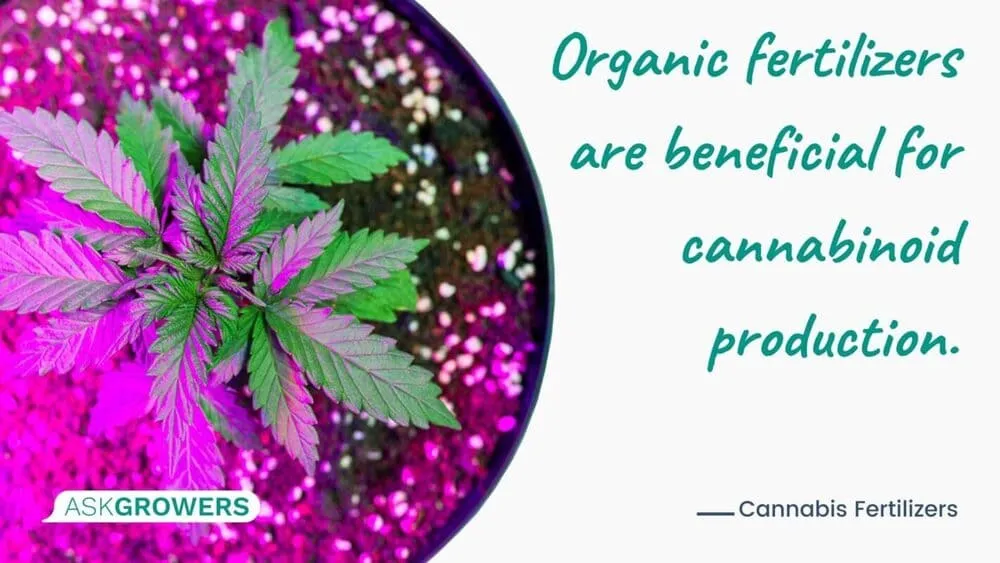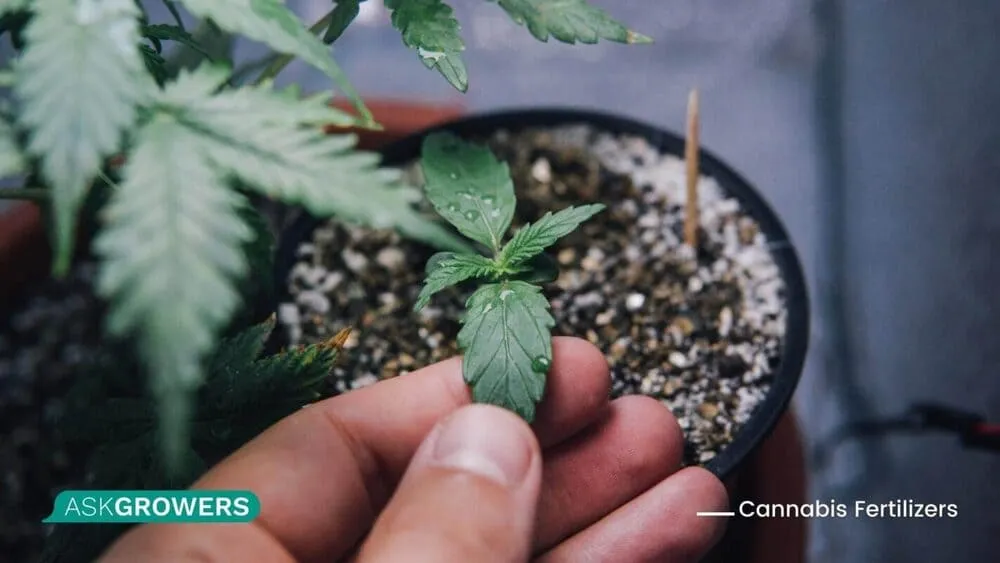Many farmers perceive cannabis as a low input crop, which can adapt to marginal soils. However, researchers stress that cannabis production requires adequate nutritional supply to optimize yields. Therefore, every novice cannabis grower inevitably faces an important issue: what fertilizers to use for weed and how to choose them. This topic is worth a detailed discussion because the selection and application of effective fertilizer play a decisive role in achieving a generous marijuana yield.
What Is a Fertilizer?
This term refers to organic or industrially produced substances added to the growing medium to optimize cannabis growth.
A good fertilizer for weed plants contains the following key nutrients:
- Nitrogen
- Phosphorus
- Potassium
- Sulfur
- Calcium
- Magnesium

However, the ratio of these components differs depending on the growing stage. For example, fertilizers containing more nitrogen relative to other chemicals are best for the vegetative stage, while phosphorus and potassium-enriched fertilizers are recommended for stimulating flowering.
It is important to distinguish between fertilizers and supplements/biostimulants. Scholars define biostimulants as substances or microorganisms that enhance nutrition efficiency and crop quality traits. They improve the physical condition of soils and may aid plant growth. Unlike fertilizers, they cannot help cannabis plants utilize the nutrients if they’re not present in the growing medium. In other words, you need to fertilize the soil first and then use biostimulants to ensure that marijuana plants consume these nutrients to the maximum.
What Types of Fertilizers Are There?
There are essentially two types of fertilizers that cannabis farmers can use. These include organic vs. synthetic fertilizers. Organic products include a variety of options, such as:
- Dolomite lime
- Epsom salt
- Forest humus
- Manure
- Fish meal, bone meal, blood meal
- Wood ash
- Bat guano
- Compost tea

Many cannabis growers who are willing to make their hobby less environmentally harmful use organic fertilizers. They have a favorable effect on the soil and produce no toxic fumes. What is more, you can prepare a homemade fertilizer for marijuana, thus reducing the cost of weed cultivation. Evidence collected by researchers also suggests that organic fertilizers are beneficial for cannabinoid production. Other advantages of natural fertilizers include the following:
- Less nutrient waste
- Low risk of overfeeding
- A positive effect on the microbial life in the soil
- Sustainable and renewable
Since organic fertilizers do not provide nutrients in excess but release them slowly, there is a low risk of burning your precious plants. If you are looking for the safest option for novice growers – organic products are the best.
However, organic fertilizers also have some limitations. They release nutrients slower than store-bought chemical fertilizers, meaning that they do not have an immediate effect. Moreover, the nutrient content in a natural cannabis fertilizer is more difficult to control. Finally, you will not enjoy using this fertilizer type if you don’t like to get your hands dirty. After all, working with manure may be the most pleasant thing for sensitive noses. If you are a small indoor grower, you probably want to avoid a foul smell.
Looking for a faster effect? Use chemical fertilizers that contain a well-balanced set of nutrients needed for a specific life cycle. The main benefit of industrially produced fertilizers is that they are absorbed quickly, allowing farmers to address nutrient deficiencies efficiently. Chemical products sold in the liquid, powder, or granular form can be found in many stores, and this accessibility makes them popular among marijuana growers.
Unfortunately, this type of fertilizer has its drawbacks:
- Toxicity
- Potential negative effect on the soil
- High risk of overfertilization and plant burning
So, if you lack skills in using chemical fertilizers, always consult the salesperson and avoid adding too much product to the soil. We also recommend reading the labeling because it usually contains all essential information on how to apply fertilizer. Of course, using gloves is also important, as chemical products may irritate your skin, especially if you are allergic to some chemical substances.
How to Choose the Best Fertilizer for Marijuana Plants
There is no universal fertilizer that works for every growing site and plant’s life cycle. The selection of the most suitable option depends on the following factors:
- Growing medium (requirements for soil and hydroponic system differ)
- Growing stage
- Indoor/outdoor conditions
- Soil quality
Your personal preferences also play a significant role in choosing a fertilization type. If you are concerned about the potential health effects of synthetic fertilizers and want to make sure that your marijuana is 100% organic, you may find natural fertilizers the best choice.

Scholars suggest mixing and combining different fertilizers in accordance with the specific needs of your garden. However, it’s better to use chemical fertilizers for hydroponic systems because organic products ferment in the reservoirs. As a result, you will have to deal with clogging and microbiological contamination.
Finally, don’t forget that the best fertilizers for cannabis that you can find in the store cannot be too cheap. Low-cost chemical products may be less balanced in terms of nutrients and pose a threat to your health, so make sure you choose more expensive options. You can check the ratings of the most reliable and reputable fertilizer producers if you are still unsure.
Conclusion
Cannabis grows strong and healthy when it has a stable supply of nutrients from the growing medium. Therefore, applying suitable fertilizers is an essential part of cannabis cultivation. You can choose organic or chemical products, as both have their strengths. However, be sure to select the option that works for your growing site.

